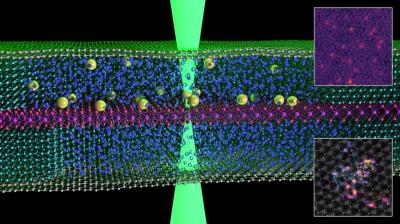by all graphene | Aug 16, 2022 | 2D materials, Aerospace, AGM, Angstron Materials, Audio, Development, Investment, Products, Research, Technical / Research
An international research team that included scientists from the University of Göttingen, Ludwig-Maximilians-Universität München, National Institute for Materials Science in Tsukuba, Japan, and University of Texas at Dallas, has detected and interpreted novel quantum...
by all graphene | Aug 15, 2022 | 2D materials, Aerospace, AGM, Angstron Materials, Audio, Development, Graphene applications, Investment, Products, Research, Technical / Research, Transistors
Researchers from The University of Texas at Austin and Sandia National Laboratories have developed graphene-based synaptic transistors for brain-like computers. These transistors are similar to synapses in the brain, that connect neurons to each other.”Computers...
by all graphene | Aug 3, 2022 | 2D materials, Aerospace, AGM, Angstron Materials, Audio, Development, Graphene applications, Graphene composites, Graphene Oxide, Investment, Products, Research, Technical / Research
Researchers from Pakistan have reported a green approach to the synthesis of graphene oxide/silver nanoparticle nanocomposite.Metallic nanoparticles (NPs) have various benefits in the field of electrochemistry. Because of their small size, nanoparticles may enhance...

by all graphene | Aug 2, 2022 | 2D materials, Aerospace, AGM, Angstron Materials, Audio, Development, Graphene applications, Graphene Sensors, Investment, Medicine, Products, Research, Technical / Research
Researchers from Penn State and China’s Hebei University of Technology, as well as additional collaborators from China, have developed a new water-resistant gas sensor for accurate, continuous monitoring of nitrogen dioxide and other gases in humid environments....
by all graphene | Aug 2, 2022 | 2D materials, Aerospace, AGM, Angstron Materials, Audio, Development, Graphene applications, Graphene water treatment, Investment, Products, Research, Technical / Research
Researchers from the University of Vienna, South Korea’s Institute for Basic Science (IBS) and the Chinese Academy of Sciences (CAS) have reported an ultrathin covalent organic framework (COF) that was constructed homogeneously on the surface of a graphene...

by all graphene | Jul 28, 2022 | 2D materials, Aerospace, AGM, Angstron Materials, Audio, Development, Investment, NGI, Products, Research, Technical / Research, University of Manchester
Graphene scientists from The University of Manchester have created a novel ‘nano petri dish’ using two-dimensional (2D) materials to create a new method of observing how atoms move in liquid. The team, led by researchers based at the National Graphene Institute (NGI),...


